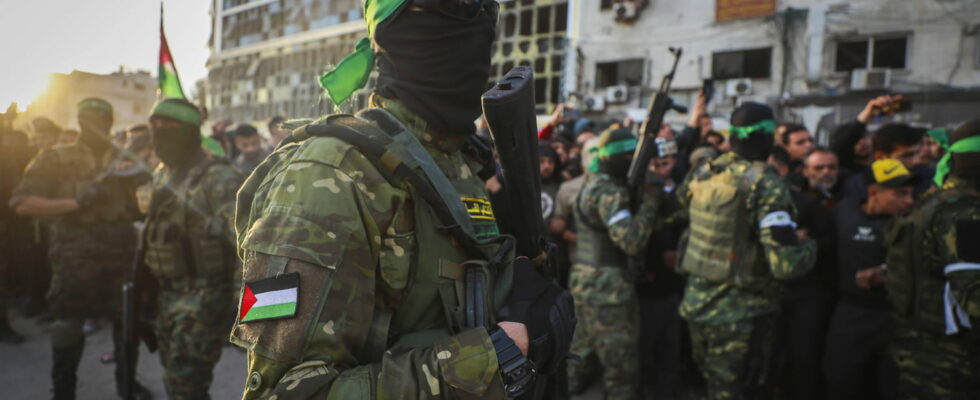Four Israeli hostages must be released by Hamas this Saturday, January 25. For its part, the Hebrew state should order the release of 120 Palestinian prisoners.
Make way for a new phase of release of Israeli hostages retained by Hamas against Palestinian prisoners this Saturday, January 25. Hamas must transmit this Friday the names of the four women who will be released tomorrow, as well as the state of health of other hostages that will be released in the coming weeks. On the Israeli side, “at least 120 prisoners (Palestinians) should be released” announces the Journal Haaretz. The list should also be communicated this Friday.
As a reminder, the truce between Israel and Hamas began on Sunday January 19, 2025 at 11:15 am (10:15 am French time), three hours late, Hamas recognizing a setback “for technical reasons on the field”. In the process, the first hostages were released. These are three women: Romi Gonen (24), Emily Damari (28) and Doron Steinbrecher (31 years old). A few hours later, Israel announced that it had released 90 Palestinian prisoners as part of the first exchange of prisoners provided by the truce agreement with Hamas. “Tonight, 90 terrorists were (…) released” from OFER military prison, in the occupied West Bank, and a detention center in Jerusalem, said a press release from the Israeli prison authority.
These prisoner exchanges must take place at more or less regular intervals for six weeks. In total, this concerns 33 Israeli hostages and 1900 Palestinian prisoners. “Between three and four women abducted” will be “released every week,” said Daniel Hagari, the Israeli army spokesman last week, even if Benjamin Netanyahu warned that Israel reserved himself “the right to resume the war if necessary “. The Hebrew State has already published a list of 734 “liberable” detainees. Hamas and Israel would have finally agreed on the release of 296 Palestinian prisoners sentenced to life during the next phase, of which 236 must be deported, either to Qatar or in Turkey.
What this truce agreement contains
Washington, the main ally of Israel, like the other members of the G7, encourages the belligerents to go further and negotiate a lasting peace in a press release: “We are urging all parties to constructively negotiate the subsequent phases of the ‘Agreement, to guarantee its full implementation and the final end of hostilities “. But nothing guarantees the success of the next negotiations. Before confirming the agreement, Benyamin Netanyahu said on Thursday, January 16, that Hamas had “withdrawn from certain agreements” at the last minute: “Hamas returns to the agreements and creates a crisis that prevents an agreement”. He had warned that the Israeli government “will not meet as long as […] Hamas has accepted all the elements of the agreement “.
During his press conference, the Qatari Prime Minister revealed that the agreement concluded included three phases. The first will be to position the Israeli troops along the Gaza border, “which will allow an exchange of prisoners, to the displaced people to find their accommodation and will also facilitate the transfer of people injured to be able to follow treatments”, detailed Mohammed Ben Abderrahmane Al-Thani.
“A delivery of humanitarian aid everywhere in the Gaza Strip allowing the entry of basic necessities, especially for displaced people who have lost their accommodation following the war, as well as the rehabilitation of hospitals, health centers And others “are also on the program for this first phase. The phases two and three remain unclear at this stage. They “will be finalized when implementing the first phase,” said the Prime Minister.
